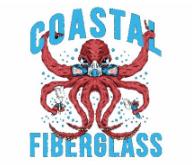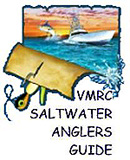
Arlington, VA – The Commission’s South Atlantic State/Federal Fisheries Management Board approved Draft Amendment 1 to the Interstate Fishery Management Plan (FMP) for Atlantic Migratory Group Cobia (Atlantic cobia) for public comment. Atlantic coastal states from Virginia through South Carolina have scheduled their hearings to gather public input on Draft Amendment 1. The details of those hearings follow.
Virginia Marine Resources Commission
June 12, 2019; 6:00 PM
380 Fenwick Rd, Building 96
Fort Monroe, Hampton, VA
Contact: Pat Geer at 757.247.2200
North Carolina Division of Marine Fisheries
June 13, 2019; 7:00 PM
Dare County Commissioners Office
954 Marshall Collins Drive, Room 168 Manteo, NC
Contact: Chris Batsavage at 252.808.8009
*Webinar Hearing
June 18, 2019; 6:00 PM
Webinar Registration:
https://register.gotowebinar.com/register/3902998396468814081
For audio, dial 1.888.585.9008 and enter the Conference Room Number: 275-479-282 Contact: Dr. Michael Schmidtke at 703.842.0740 *The webinar hearing is intended to primarily accommodate stakeholders in states where an in-person hearing is not being held. Stakeholders in Virginia, North Carolina, and South Carolina are encouraged to provide comments at the in-person hearings in their respective states, rather than the webinar hearing.
Draft Amendment 1 was initiated in anticipation of removal of Atlantic cobia from the South Atlantic and Gulf of Mexico Fishery Management Councils’ Fishery Management Plan for Coastal Migratory Pelagic resources (CMP FMP) through Regulatory Amendment 31. Final approval for CMP FMP Regulatory Amendment 31 was approved earlier this year. Therefore, there is no longer a federal management plan for Atlantic cobia, and the Commission is the sole management body for this stock. This necessitates changes to several portions of the current interstate FMP that are dependent on the CMP FMP and also provide the opportunity for the Board to construct a long-term strategy for managing in the absence of a federal FMP.
Draft Amendment 1 presents options for addressing 13 issues within the FMP, including additions to the management goals and objectives, establishment of processes to define biological reference points and specify harvest, changes to commercial monitoring of landings, clarification of the process for evaluating recreational harvests against state harvest targets, potential changes to commercial fishery management measures, establishment of de minimis criteria for the commercial fishery, and recommended management measures for federal waters. For some of these issues, multiple options are presented, while for others, only one option is presented. Public input is requested for all issues included in Draft Amendment 1.
Draft Amendment 1 is available at PDF Link or via the Commission’s website, www.asmfc.org under Public Input. Fishermen and other interested groups are encouraged to provide input on Draft Amendment 1 either by attending state public hearings or providing written comment. Public comment will be accepted until 5 PM (EST) on July 15, 2019 and should be sent to Dr. Michael Schmidtke, Fishery Management Plan Coordinator, 1050 N. Highland St, Suite A-N, Arlington, VA 22201; 703.842.0741 (FAX) or at comments@asmfc.org (Subject line: Cobia Amd 1).
If your organization is planning to release an action alert related to the Draft Amendment 1, please contact Dr. Michael Schmidtke at mschmidtke@asmfc.org prior to its release. The Board will meet at the commission’s 2019 Summer Meeting in Aug.
































 Views Last 7 days : 1637
Views Last 7 days : 1637 Views Last 30 days : 6971
Views Last 30 days : 6971